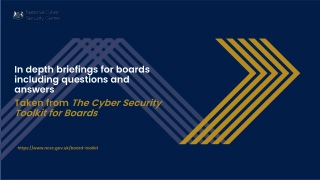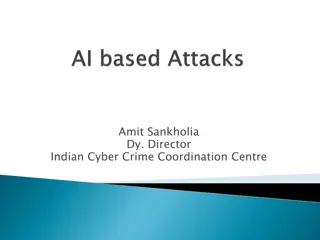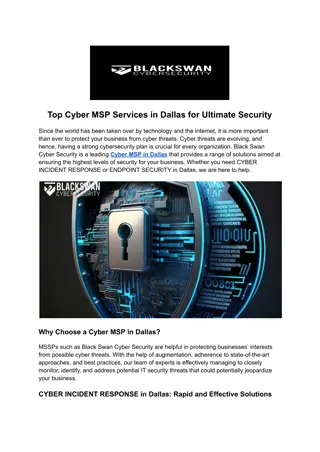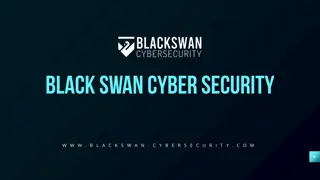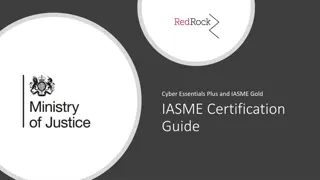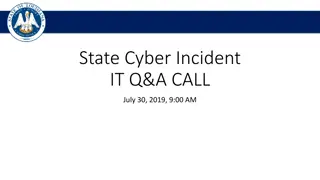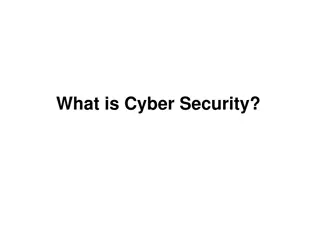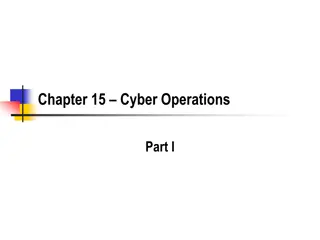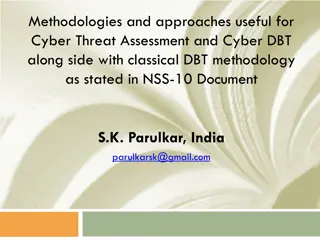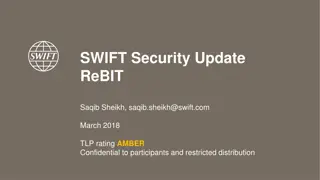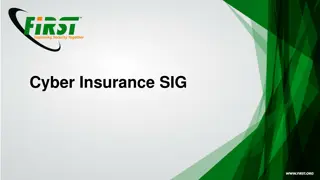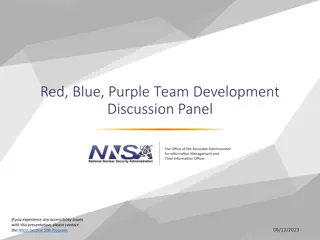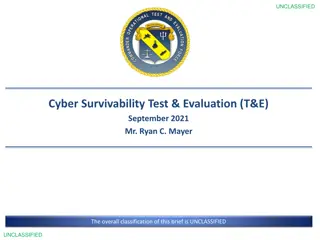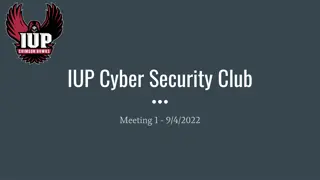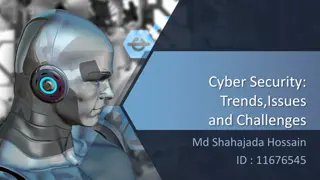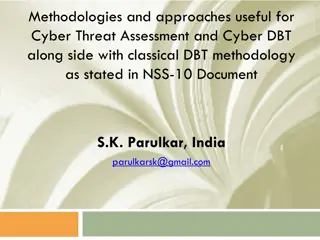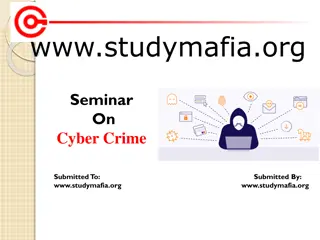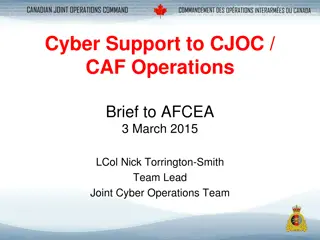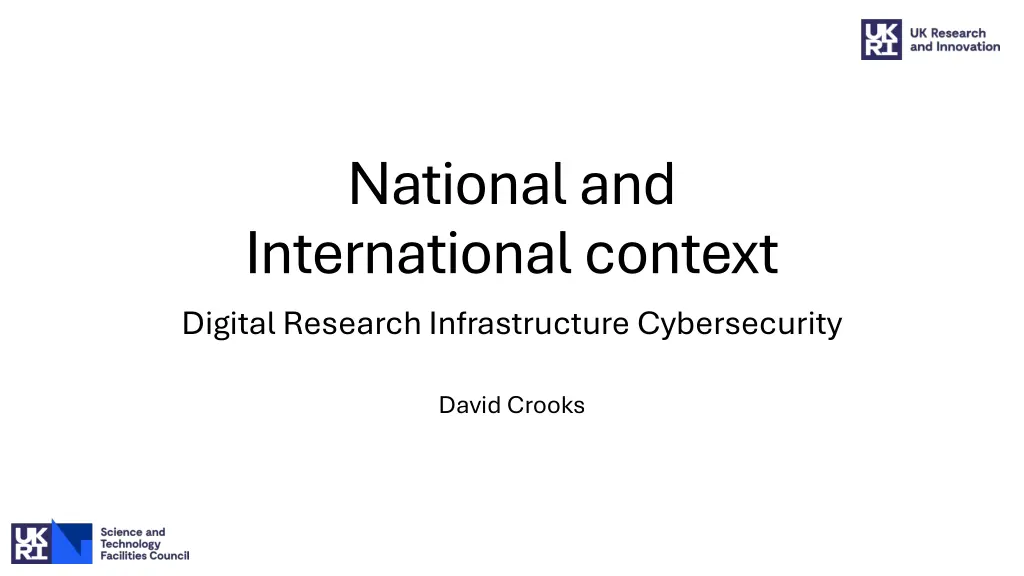
Digital Research Infrastructures in Cybersecurity for UK Research and Innovation
"Explore the role of David Crooks in cybersecurity for national and international digital research infrastructures. Learn about UKRI's Digital Research Infrastructures supporting research and innovation. Discover the features and challenges of DRI cybersecurity in the context of persistent threats at the research and education level."
Download Presentation

Please find below an Image/Link to download the presentation.
The content on the website is provided AS IS for your information and personal use only. It may not be sold, licensed, or shared on other websites without obtaining consent from the author. If you encounter any issues during the download, it is possible that the publisher has removed the file from their server.
You are allowed to download the files provided on this website for personal or commercial use, subject to the condition that they are used lawfully. All files are the property of their respective owners.
The content on the website is provided AS IS for your information and personal use only. It may not be sold, licensed, or shared on other websites without obtaining consent from the author.
E N D
Presentation Transcript
National and International context Digital Research Infrastructure Cybersecurity David Crooks
Who am I? David Crooks, UK Research and Innovation, STFC (RAL) Core role in cybersecurity for research infrastructures Computing infrastructure supporting CERN LHC (WLCG) Security Officer for UK component (GridPP) IRIS DRI Head of Cybersecurity for STFC Scientific Computing Chair of STFC Cybersecurity Group UK DRI Cybersecurity Lead
UKRI Digital Research Infrastructures Digital research and innovation infrastructure (DRI) underpins the research and innovation ecosystem. It enables us to solve problems, and to analyse and understand complex topics on any subject. This is possible because digital infrastructure allows us to work with data and computation efficiently and securely, at scale. https://www.ukri.org/what-we-do/creating-world-class-research-and-innovation- infrastructure/digital-research-infrastructure/
What is DRI? The building blocks of the DRI system include: large scale compute facilities, including high-throughput, high-performance, and cloud computing data storage facilities, repositories, stewardship and security software and shared code libraries mechanisms for access, such as networks and user authentication systems people: the users, and the experts who develop and maintain these powerful resources. The vision of the UKRI DRI programme is a coherent state-of-the-art national digital research infrastructure that will seamlessly connect researchers, policymakers and innovators to the computers, data, tools, techniques and skills that underpin the most ambitious and creative research.
Features of DRI Digital Research Infrastructures are often nationally or globally federated across multiple organisations Often involving a heterogeneous mix of technologies Driven by national and international science community needs This is what makes it so different to a corporate IT infrastructure Typically not owned by a single organisation
DRI Cybersecurity Persistent threat at (inter)national R&E level Manchester, British Library, HZB, DDoS, Requirement for DRI to provide secure, assured environments across risk appetites Diverse range of activities Opportunity to use our community to improve overall security Both within specific research infrastructure scope but actually more broadly for research computing cybersecurity Similarly, we have the need, but opportunity, to act as a national scale endeavour Hard challenge, but benefits come from acting at this scale Funding/ setting baselines/ working with partners
Security and interoperability Beyond islands: interoperability and federation of systems may lead to challenges in security (up/down/side-to-side) Command-and-control will not work! Requires coordinated cybersecurity strategies Complex risk environments Compute cloud compute storage Trusted Research Environments Shared user communities
DRI Cybersecurity Persistent threat at national R&E level Requirement for DRI to provide secure, assured environments across risk appetites Diverse range of activities Opportunity to use our community to improve overall security Both within specific research infrastructure scope but actually more broadly for research computing cybersecurity Similarly, we have the need, but opportunity, to act as a national scale endeavour Hard challenge, but benefits come from acting at this scale Funding/ setting baselines/ working with partners
DRI Risk Environments Different types of research infrastructures Open research environments where integrity of data is primary concern Trusted research environments where confidentiality may be primary concern Maturing environments where uses cases may be evolving rapidly Although: more than this bimodal distribution Different technology stacks High Throughput; High Performance; Cloud Different federation models Mature/transitioning/new Yet to federate/won t federate Understanding (shared) user communities is critical
DRI Risk Environments Across our work, we have a range of environments BUT we all have a risk environment Understanding these and where the boundaries lie will be essential How is a different question Helps with understanding how we can interoperate between infrastructures And how we can work effectively with organisational, corporate risk
NCSC Cyber Assessment Framework An outcomes-based risk management framework Meeting a need identified several years ago to improve the security of network and information systems across the UK Originally focused on organisations that play a vital role in the day-to-day life of the UK are designated as forming part of the Critical National Infrastructure (CNI) are subject to certain types of cyber regulation Networks & Information Systems (NIS) cyber aspects of safety regulation such as Control Of Major Accident Hazards (COMAH) https://www.ncsc.gov.uk/collection/caf
Government Cyber Security Strategy In early 2022, Government Cyber Security Strategy 2022-2030 published https://www.gov.uk/government/publications/government-cyber-security- strategy-2022-to-2030 to ensure that core government functions - from the delivery of public services to the operation of National Security apparatus - are resilient to cyber attack Government will adopt the Cyber Assessment Framework (CAF) as the assurance framework for government.
GovAssure Earlier this year the GovAssure approach was launched https://www.security.gov.uk/guidance/govassure/ https://www.gov.uk/government/news/government-launches-new-cyber- security-measures-to-tackle-ever-growing-threats--2 Using the NCSC s Cyber Assessment Framework (CAF) to review the cyber security of government departments and selected arm s length bodies essential functions and services Including UK Research and Innovation UK WLCG Tier-1 now undergoing assessment against CAF
DRI and CAF Mappings exist between the CAF and other standards Including ISO27k/NIST Cybersecurity Framework/CIS https://www.security.gov.uk/guidance/govassure/templates-and- downloads The CAF could provide a useful, government backed tool in building a baseline for organisations participating in DRI activities
Compliance (as compliance) Compliance will play an increasing role in all of our lives Cyber Assessment Framework UKRI currently going through assessment process GridPP Tier1 (SCD) being assessed Extensive piece of work but very fruitful Clearly more complex than one framework The compliance needs we have will depend on our particular environment We will have more than one ISO27k/CAF/CE(+)/
Compliance (as development tool) We can use cyber frameworks as a development tool CAF has existing mappings between it and other frameworks A Research CAF profile which we develop together could help in the bootstrapping of new infrastructures Providing assurance at a governance level is essential, BUT is also a powerful tool for the same reasons Underpins the work to be done
People and process Across our diverse landscape, we will have a range of operating environments The processes and approaches we put in place can be used more broadly This work is never done, but we can establish a sustained activity People and processes -> technology People are our most important resource
Strong links with partners Work as closely as possible with Jisc and NCSC Collectively as DRI community can act more effectively than individually Reinforce existing links to our international security partners and infrastructures DRI International community Jisc NCSC Cybersecurity We support the most critical organisations in the UK, the wider public sector, industry, SMEs as well as the general public. Represents the perspective of digital research infrastructures including innovative workflows and large- scale data management. Essential that we continue ongoing engagement internationall Jisc is the UK digital, data and technology agency focused on tertiary education, research and innovation..
International context Much of the work of STFC is intrinsically international For example working with CERN, SKA, All of our cybersecurity work immediately requires working with colleagues and partners internationally WLCG security CERN, The Netherlands, Slovenia, France, Germany, Portugal, USA Last week: NSF Cybersecurity Summit in Pittsburgh: Trusted-CI, NSF Cybersecurity Centre of Excellence Very similar challenges to the UK, close partnership
Core Cybersecurity Skills Already heard about theme in DRI programme of the development of the skills needed to support our research infrastructures In a cybersecurity context, these include General outreach (users) Infrastructure (shared and agreed best practice for operations) Specialist skills (cybersecurity professionals)
Cyber Threat Intelligence The use of shared cyber threat intelligence is vital to this work Both strategically (threat landscape) And operationally (incident response, detection and prevention) Effective use of threat intelligence has to be part of our strategy
DRI Cybersecurity Workshops First Strategy workshop took place in April 2024 Broad representation, focusing on high level strategy, scope, goals First Technical workshop in November Focused on developing concrete artefacts Documentation, strategy, guidance, Intention to hold Strategy workshops in the spring and Technical workshops in the fall Would really like to have representation from Trusted-CI community


